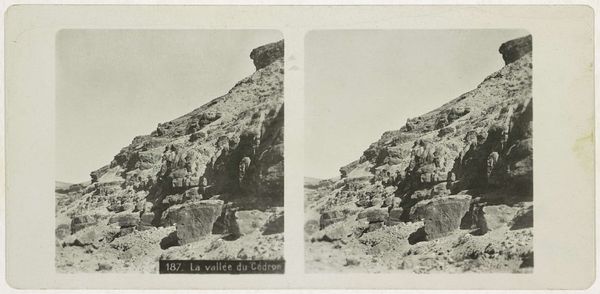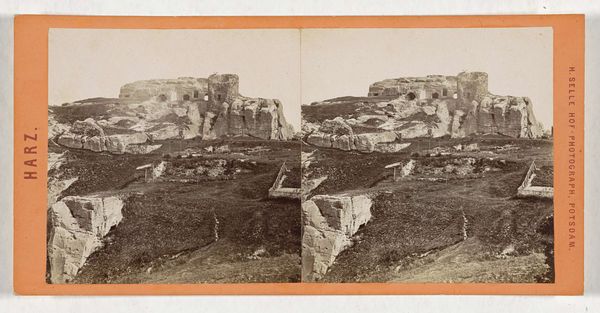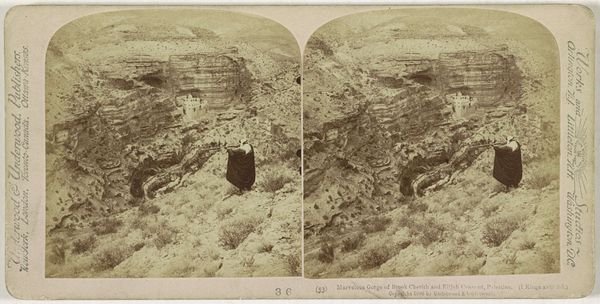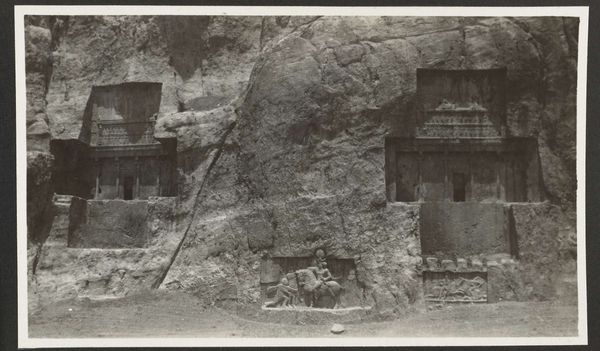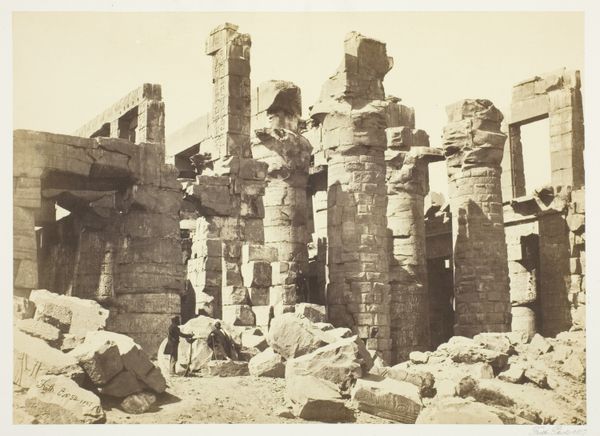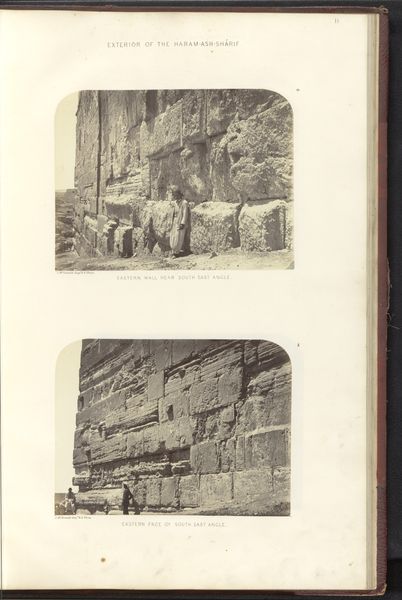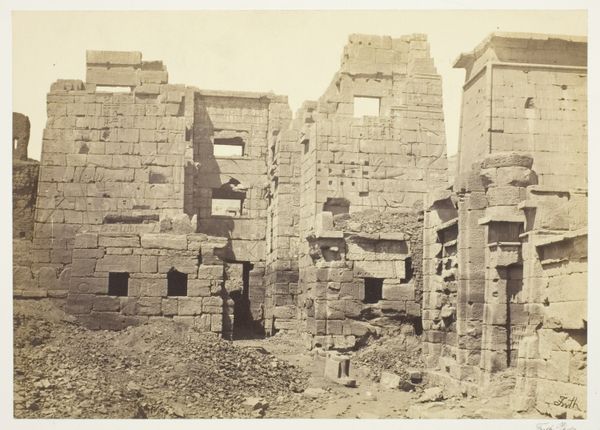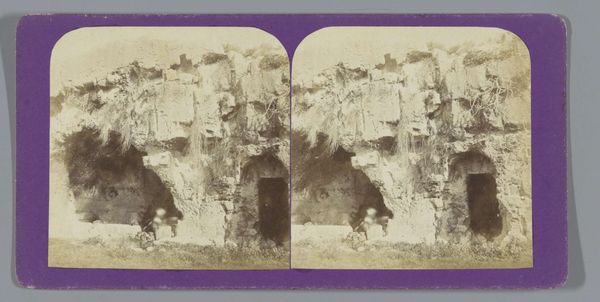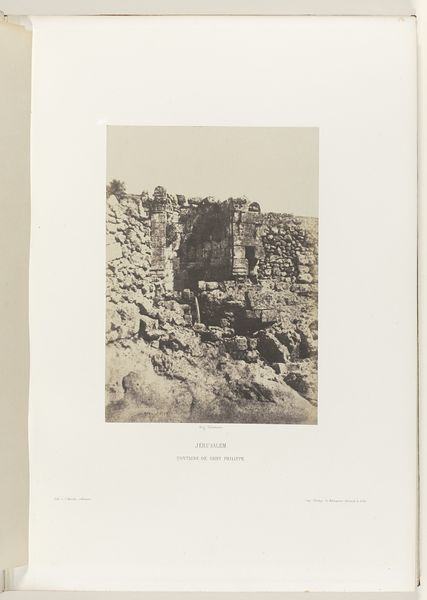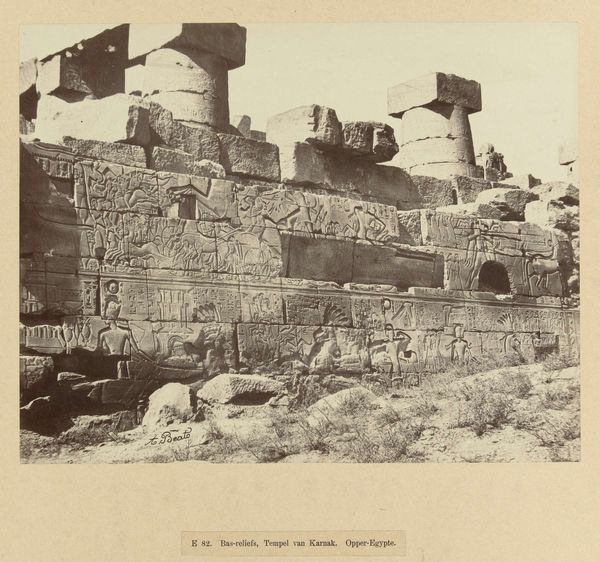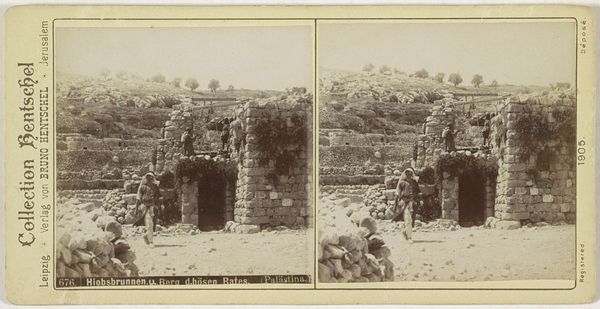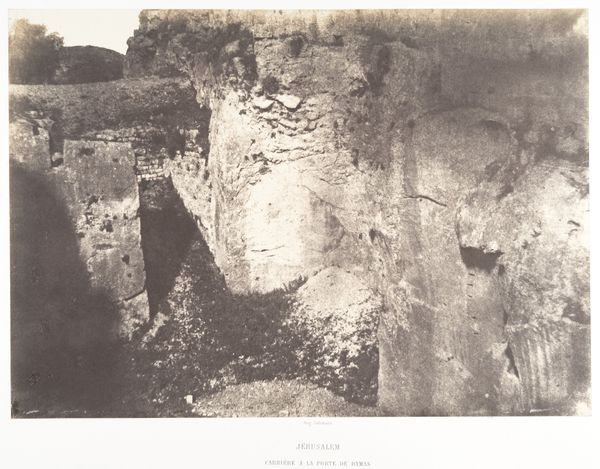
photography, gelatin-silver-print
#
landscape
#
photography
#
ancient-mediterranean
#
orientalism
#
gelatin-silver-print
Dimensions: height 88 mm, width 179 mm
Copyright: Rijks Museum: Open Domain
Curator: This gelatin-silver print, taken in 1903 by Richard Sochor, is entitled "Rotsgraven van Benei Hezir en Sint-Zacheria, Kidron-dal" or, in English, "Rock tombs of Benei Hezir and Saint Zachariah, Kidron Valley." Editor: A valley of the shadow of death! I'm getting a serious ancient vibes; so silent, sturdy, and melancholic. You could almost feel the weight of history bearing down. Curator: Exactly. This image captures a very specific cultural fascination of the time: Orientalism. We see how European photographers were drawn to the Holy Land, documenting ancient sites and biblical locations like this, but of course filtered through their own cultural lens. Editor: Those rock-cut tombs are incredible. Look how seamlessly they emerge from the stone; nature and art blending, aging together. It is not about death in this scene, but how things exist. The stairway to Heaven, so to speak. Curator: The tombs themselves, particularly the Tomb of Zechariah, are significant historical sites with architectural details dating back to the Second Temple period. Photographers like Sochor were very keen on this visual record, turning these structures into orientalist landscapes. Editor: Photography transforms history into an immediate experience, doesn't it? I mean, staring at those sepulchers, I'm considering what would happen to their shapes when an earthquake happen and destroyed the whole thing. Curator: The way light and shadow are used gives the image such a sense of depth and makes the scene more inviting despite its funereal subject. Editor: Perhaps not inviting, per se... unless you’re into sepulchers. What gets me are those worn stones. Thousands of years of weather on hard rocks will turn into the sandy dust. Thinking this way is quite exciting as an artist, imagining future viewers in my art installation in one-hundred-year time! Curator: This photograph provides insight into how early 20th-century viewers conceived of biblical history, making it so appealing to visitors and local groups who might have felt some emotional, traditional connections to these locations. Editor: Seeing an image like this can make you think, doesn't it? Anyway, let us conclude here, because thinking about sepulcher would take much longer time to digest. Curator: Absolutely, it's images like this that spark deeper thoughts. Thanks for your insights.
Comments
No comments
Be the first to comment and join the conversation on the ultimate creative platform.

